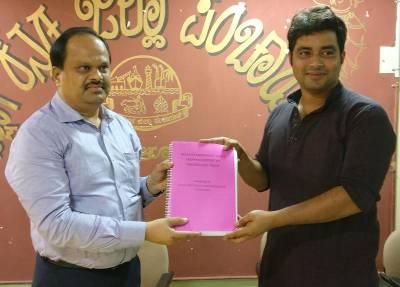
Mangaluru :
A tripartite agreement involving NRSC-Isro, Dakshina Kannada Zilla Panchayat and Alva’s Institute of Engineering and Technology (AIET) has seen students of AIET carry out asset mapping of 5,000 assets in Mangaluru taluk. The effort saw 55 faculty and 330 students undertake the mapping work in 25 days after AIET team trained gram panchayat members in 55 GPs in the taluk and panchayat development officers (PDOs) helped them in the endeavour.
With M R Ravi, chief executive officer of DK ZP, responding positively to the proposal from AIET, National Remote Sensing Centre (NRSC) and AIET team, trained PDOs of Mangaluru taluk about Bhuvan Panchayat android application at an orientation programme. The 55 GPs were divided in 11 clusters. Each cluster comprised 5 GPs, ans was allotted five faculty and 30 students from AIET. The cluster-level training was held on May 3 and 4.
Vivek Alva, managing trustee, Alva’s Education Foundation , who handed over the asset mapping report of the taluk to Ravi on Saturday, said that the work was an excellent learning process for both students and faculty of AIET. “This not only gave much needed rural exposure to students of AIET, but also encouraged them to carry out projects for villages,” he said, adding that the project has effectively used the application created by NRSC-Isro.
Ravi said such projects expose students to rural India and problems people face in urban areas. Noting that he had personally visited some of the gram panchayats where the asset mapping was going on, Ravi said that the report will help planners like him refix their priorities and work towards filling the critical gaps in local infrastructure. “The report helps the administrators draw critical inferences which can help people at large,” he claimed.
Referring to one such inference, he said that the mapping has identified presence of 34 churches, 131 mosques and 374 temples in the taluk. “This is an indicator of the religious harmony and peaceful coexistence of people,” he said. The presence of 111 bank branches gives one the inference that the taluk is commercially urban oriented society. It also throws light on shortcomings in administrative initiatives such as failure to promote rainwater harvesting and surfeit of borewells.
source: http://www.timesofindia.indiatimes.com / The Times of India / News> City News> Mangalore News / TNN / May 28th, 2017